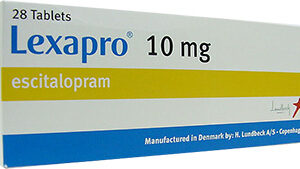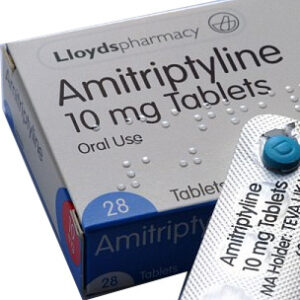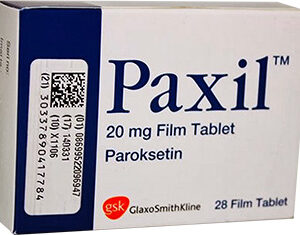Brand Name and Generic
Paxil is the brand name for the generic medication paroxetine. Paroxetine belongs to a class of drugs known as selective serotonin reuptake inhibitors (SSRIs), which are used primarily to treat mood disorders.
Approved Indications
Paxil is approved to treat major depressive disorder, social anxiety disorder, panic disorder, generalized anxiety disorder, posttraumatic stress disorder, and obsessive-compulsive disorder in adults. Its effectiveness and safety for these conditions have been established in clinical trials.
Dosage Forms Available
Paroxetine is available in multiple forms, including immediate-release tablets, controlled-release tablets, and oral suspension. The immediate-release form is typically taken once daily, usually in the morning to avoid insomnia. Controlled-release tablets are taken once daily, preferably in the morning to maintain serum levels.
Starting Dosages
The recommended starting dose for Paxil varies depending on the condition being treated. For example, for major depressive disorder, the initial dosage is usually 20 mg per day, which may be adjusted based on response and tolerability.
Dose Adjustments
Incremental adjustments of Paxil dosage are made after assessment of therapeutic response and tolerability. Adjustments may happen at intervals of at least one week, and the maximum dosage should not be exceeded. Dosage adjustments in special populations, such as the elderly, require additional adjustment and caution.
Administration Guidelines
Paxil should be taken whole, not chewed or crushed, to ensure proper drug release. It can be taken with or without food. Consistent administration time helps maintain steady-state blood levels of the drug.
Drug Interactions
Paxil has the potential to interact with a wide range of drugs, including monoamine oxidase inhibitors (MAOIs), other SSRIs, triptans, tricyclic antidepressants, and drugs metabolized by the liver enzyme CYP2D6. Understanding the patient’s full medication profile is essential to avoid interactions.
Pharmacokinetics
Paroxetine is well absorbed after oral administration and undergoes first-pass metabolism in the liver. Its bioavailability is approximately 50%. Paxil is extensively metabolized in the liver via several pathways, including oxidative and methylation pathways. The drug’s pharmacokinetics can be altered in patients with liver or kidney impairment.
Storage Recommendations
Paxil should be stored at room temperature, away from moisture and heat. The bottle should be tightly closed when not in use. Proper storage ensures the medication’s efficacy and shelf-life are maintained.
Discontinuation of Treatment
Gradual dose reduction is recommended when discontinuing Paxil to minimize the risk of withdrawal symptoms. Abrupt discontinuation should be avoided unless it is medically necessary.
Monitoring Parameters
Clinicians should monitor patients for signs of clinical improvement, side effects, and emergence of suicidal ideation, especially in the beginning of therapy or when doses are changed. Regular follow-ups and adjustments of therapy are vital in managing the patient’s condition.
Overdose Management
In case of an overdose, supportive care is essential. There is no specific antidote for Paxil. Treatment focuses on ensuring airway, breathing, and circulation, and may include gastric lavage, activated charcoal, and symptomatic support in a medical facility.
Use in Specific Populations
Caution is advised when prescribing Paxil to pregnant women, nursing mothers, children, and adolescents due to potential risks and limited evidence of safety and efficacy in these populations. Elderly patients may require lower doses and close monitoring due to potential sensitivity to the drug’s effects.
Adverse Reactions and Side Effects
Commonly reported side effects of Paxil include nausea, drowsiness, dizziness, insomnia, sweating, dry mouth, constipation, and sexual dysfunction. Patients should be advised about these potential adverse reactions and instructed to report any severe or unusual symptoms to their healthcare provider.
Impact on Laboratory Tests
Paxil can potentially influence laboratory tests. It may affect bleeding times, serum glucose levels, and may cause an increase in serum triglycerides and cholesterol levels. Clinicians should be aware of these potential lab alterations when interpreting test results.
Behavioral Effects
Patients taking Paxil may experience changes in behavior, including an increased risk of suicidal thoughts and behaviors, particularly in the first few months of treatment or when the dose is adjusted. It is essential to monitor patients for these changes, and for the emergence of agitation, irritability, and unusual changes in behavior.
Pregnancy and Lactation
Exposure to Paxil during pregnancy, particularly in the first trimester and late in the third trimester, can increase the risk for birth defects and other complications. Paxil is excreted in breast milk and may affect a nursing infant. Risks should be weighed against the benefits when considering Paxil for pregnant or nursing mothers.
Special Considerations
Patients with bipolar disorder, liver or kidney disease, a history of seizures or bleeding disorders should use Paxil with caution. A thorough medical history and assessment of contraindications are critical before initiating therapy with Paxil to ensure patient safety.
Medication Disposal
Unused or expired Paxil should be disposed of properly to avoid potential harm to others and the environment. It should not be flushed down the toilet or thrown into the trash. Patients should be directed to a drug take-back program for safe disposal.







Reviews
There are no reviews yet.